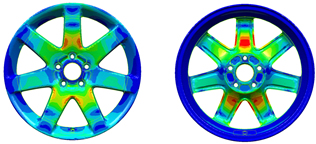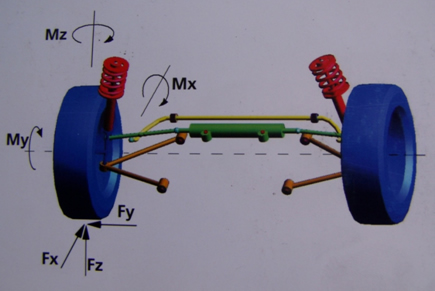Mathematics and rigid testing make beauty safe
It goes without saying that the delicate looking aluminum version needs to be as reliable and sturdy and to withstand the same loads as its more rugged looking relative made of steel.
First of all, a wheel is a safety component. Technical know-how, mathematics, physics and extensive strength tests turn creative design into "safe beauties". Developers simulate the newly designed wheel using the finite element method (FEM), a recognized calculation method in solid-state simulation. Computations are based on Hooke's Law. It describes the relationship between the acting force and the resulting deformation in a solid's elastic range.
When a force acts on an elastic body, it is either extended or shortened, with mechanical stress occurring in the material. In a solid's elastic range, this relationship is linear, i.e. occurring mechanical stress is directly dependent on the material-specific modulus of elasticity and the strain.
The modulus of elasticity or Young's modulus is a constant that specifies how easy or hard it is to elastically deform a material. Young's modulus for aluminum alloys, for example, is 70 - 75 kN/mm² while for elastomers (rubber) it only ranges between 0.01 to 0.1 kN/mm². Hooke's Law:

The finite element method discretizes a continuous domain into a defined/finite set of sub-domains, also called elements. Every element is described by an equation that mathematically captures the element's mechanical facts.
The elements are linked with their neighboring nodes. In other words: if a force acts on an element, it also acts, in a modified form, on the neighboring elements. Mechanical stresses and their interaction are described at any point in the entire structure by the interplay of all element equations. The resulting structural analysis provides first information about the theoretical load profile. The points for which the maximum loading has been calculated are marked by a special color indicating potential weak spots.

Structural analysis


















